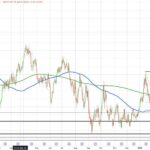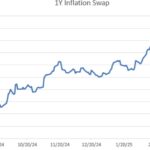
Navigating the Volatile Seas of WTI Crude Oil Futures: Latest Insights & Trends
Tháng 4 1, 2025
Navigating the Economic Triangle: Tariffs, Federal Reserve Policy, and Inflation in the U.S.
Tháng 4 1, 2025Wisconsin Supreme Court Election: A Historic Battle for Judicial Control
The upcoming Wisconsin Supreme Court election on April 1, 2025, has emerged as one of the most significant and expensive judicial races in U.S. history. With expenditures surpassing a staggering $90 million, the contest between Brad Schimel and Susan Crawford exemplifies the intense politicization of state-level judicial elections. This race is not just about securing a seat; it represents a pivotal struggle for the ideological future of the court, with high stakes that could affect legislation on critical issues such as abortion access and redistricting.
Candidates and Their Backgrounds
Brad Schimel, the former state Attorney General, stands as the conservative candidate in this high-stakes election. With strong backing from prominent Republican figures, including Elon Musk and Donald Trump, Schimel’s campaign clearly aims to galvanize the conservative base. His established reputation and network of influential supporters position him as a formidable opponent in a race that many see as a litmus test for Trump’s potential second term in office.
On the other side, Susan Crawford represents the liberal wing of the political spectrum, serving as a circuit court judge from Dane County. Although she faces challenges stemming from low morale among Democrats following the recent November elections, Crawford’s campaign has gained momentum through renewed energy stemming from recent developments. Her support from major donors, including progressive figures like George Soros, underscores a significant financial and ideological commitment to counterbalance Schimel’s conservative funding.
Key Issues at Stake
The outcome of this election is expected to influence the ideological balance of the Wisconsin Supreme Court profoundly. Both candidates embody differing judicial philosophies that could impact key issues like abortion rights and redistricting in the state. With reproductive rights under intense scrutiny across various states, the court’s composition may determine how Wisconsin navigates these critical legislative waters. Furthermore, redistricting decisions could shape the political landscape for years to come, directly affecting electoral outcomes.
The significance of this election extends beyond local implications; it serves as a national focal point reflecting the broader partisan divisions within America. With a potential turnout of around 2 million voters, which is notably higher than typical for judicial races, the increased engagement highlights the race’s relevance. Both candidates recognize that the outcomes could reverberate beyond the state, influencing national discussions on judicial independence and political influence.
Recent Developments and Funding Dynamics
In recent weeks, Schimel has gained substantial conservative momentum, bolstered by significant financial backing that fuels an aggressive campaign strategy. Elon Musk’s active involvement in hosting events and publicly criticizing “activist judges” emphasizes the high stakes at play and exemplifies how modern influencers are shaping political campaigns. On the flip side, even though Crawford’s campaign has faced initial hurdles, recent events have helped renew enthusiasm among Democratic support, which could play a critical role in mobilizing voters.
As the campaign advances toward the April election date, the Wisconsin Supreme Court race promises to bring heightened attention, significant monetary investment, and deep political debate. As both candidates vie for the open seat, the outcome will not only define the future of the Wisconsin judiciary but could also set crucial precedents for determining the direction of the nation’s judicial landscape. Voters are encouraged to consider the implications of their choices as this historic election unfolds.

